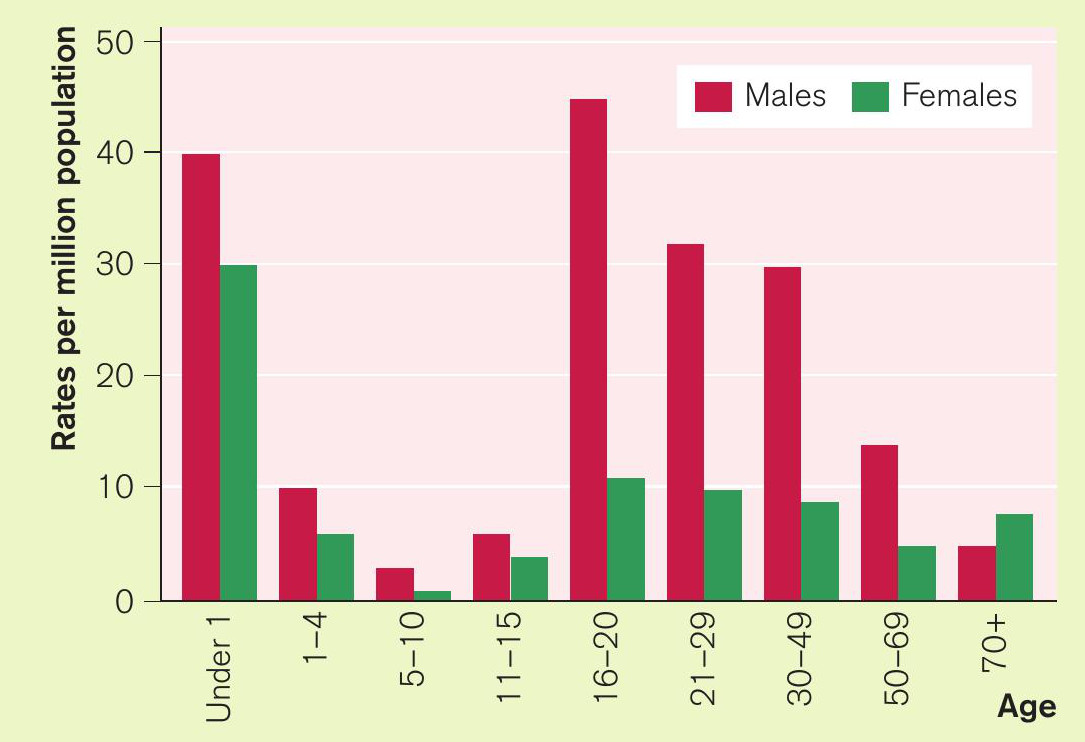
There is a lot of discussion these days about rising crime levels involving women, as either victims or offenders. We see press coverage, for example, of harrowing cases of serious crime, including homicide, where the victim is female. Such killings are usually carried out by men who are well known to their victims, often husbands and partners. But the data on homicide victims by sex and age shows two important things: first, that babies of both sexes are especially vulnerable, and second, that men between the ages of 16 and 29 are overwhelmingly the most likely victims of homicide (see Figure 1). Often these ‘mundane’ murders of young victims are little reported, compared to more sensational cases involving female victims.
If we now look at recent official data on offending by age and sex (see Figure 2), we can see broadly similar patterns to male and female offending. For both sexes the offending peak is in the teenage years (15 years for females, 17 for males), but female offending declines earlier than for males. Despite our anxiety about rising female offending, by 20 years of age less than 1% of females were found guilty of an indictable offence. Men offend for longer — this 1% low figure is not reached for men until 45 years of age.
Your organisation does not have access to this article.
Sign up today to give your students the edge they need to achieve their best grades with subject expertise
Subscribe




